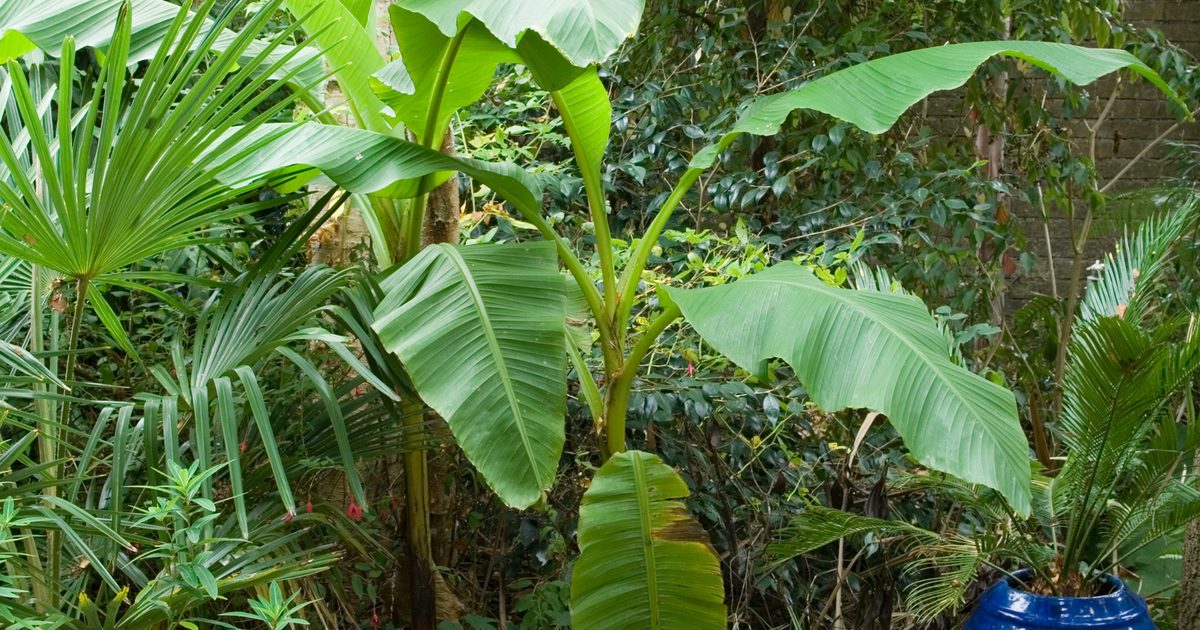How one can develop bananas throughout the UK
Develop banana vegetation in full photo voltaic to partial shade in fertile, moist nonetheless well-drained soil, in a sheltered spot. Mulch the roots and defend the stem with horticultural fleece or a thick layer of straw in autumn so it doesn’t succumb to winter frosts.

Further on rising bananas:
The place to plant bananas
Develop Musa in full photo voltaic to partial shade in fertile, moist nonetheless well-drained soil, in a sheltered spot. Or develop in an enormous container that you possibly can switch indoors in the middle of the winter months.
How one can plant bananas
Dig a generous hole, together with a great deal of rich compost.
On this clip from Gardeners’ World, Monty Don makes an unlimited new addition to his Jewel Yard at Longmeadow. Planting an enormous and spectacular Abyssinian banana plant or pink banana plant (Ensete ventricosum ‘Maurelii’) with beautiful plum-tinged foliage, he explains learn to put collectively the soil, what measurement hole to dig, and learn to place it to best influence. He moreover explains learn to deal with banana vegetation over winter, and advocate a additional hardy alternative (Musa basjoo) that you possibly can probably use in its place:
How one can defend banana vegetation in winter
Cowl the underside of your Musa plant with a thick mulch in autumn to protect the roots from chilly and moist over winter. You might also need to guard the leaves with horticultural fleece. Most vegetation will revenue from a spring trim, to tidy ravaged leaves.
The pink Abyssinian banana (Ensete ventricosum ‘Maurelii’) is a robust plant with massive red-tinged leaves, splendid as a result of the centrepiece in a tropical-themed border. However, it won’t survive any frost, so it is important take movement in autumn to ensure it survives the winter. Discover ways to dig it up on this fast Gardeners’ World video info that features Monty Don:
Having dug his banana up from the border and let it dry out, Monty explains learn to retailer it so it goes dormant over winter:
Tender bananas which have been saved indoors over winter should be launched once more into progress in mid-spring, so that they are capable of plant out after the ultimate frosts. On this clp from gardeners’ World, Monty Don reveals you learn to repeatedly harden off an beautiful nonetheless tender banana plant:
How one can propagate banana vegetation
Seek for small, suckering shoots on the bottom of your banana plant. New vegetation might be grown from these – merely separate them from the mum or dad plant in spring and pot them as a lot as develop on beneath cowl.
Rising banana vegetation: draw back fixing
Do you have to’re rising Musa in a conservatory or greenhouse, look out for mealybug and pink spider mite. Outside, wind harm can tear the leaves and chilly, moist local weather may trigger rot.
Sorts of banana plant to develop
- Musa basjoo – is the Japanese banana and is grown for its big leaves, which will measure as a lot as 3m in measurement. Within the appropriate circumstances, flowers appear in summer season, and usually small fruits will observe, nonetheless these aren’t edible. The RHS has given Musa basjoo the distinguished Award of Yard Benefit
- Musa lasciocarpa – the chinese language language yellow banana has typical banana leaves, nonetheless the yellow flowers in summer season are additional inserting than its Japanese cousin. The plant dies once more after flowering, nonetheless new shoots will appear and might be grown on to modify the mum or dad plant. This banana was believed to be extinct, nonetheless was rediscovered throughout the distant Himalayas. The RHS has given Musa lasciocarpa the Award of Yard Benefit
- Musa × paradisiaca ‘Rajapuri’- a hardy cultivar that copes successfully with wind. With rich inexperienced leaves, it’d moreover produce edible fruits within the appropriate circumstances. Peak 2.4m (8ft)
- Musa acuminata ‘Dwarf Cavendish’ – a smaller choice, rising to 2m, with big, barely reddish leaves. RHS Award of Yard Benefit
- Musa acuminata ‘Zebrina’ – a medium peak cultivar that is good for containers, with extraordinarily ornamental, red-striped leaves. One different Award of Yard Benefit holder